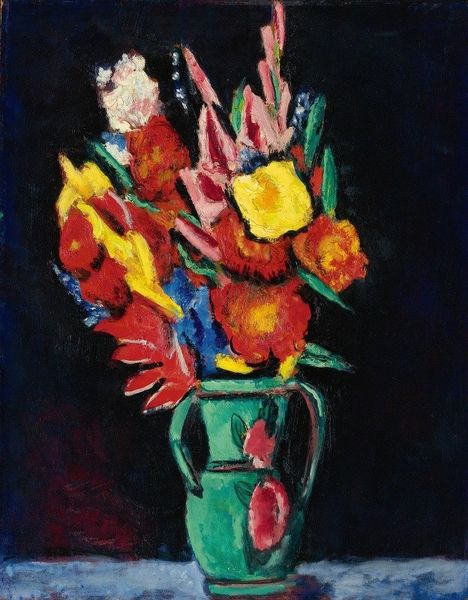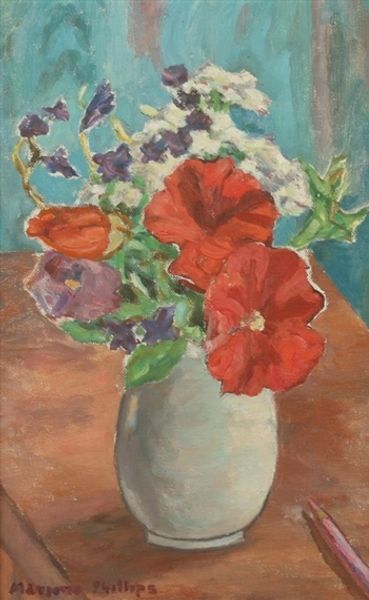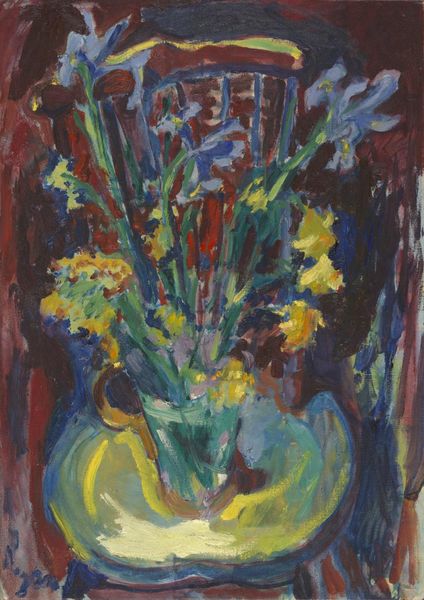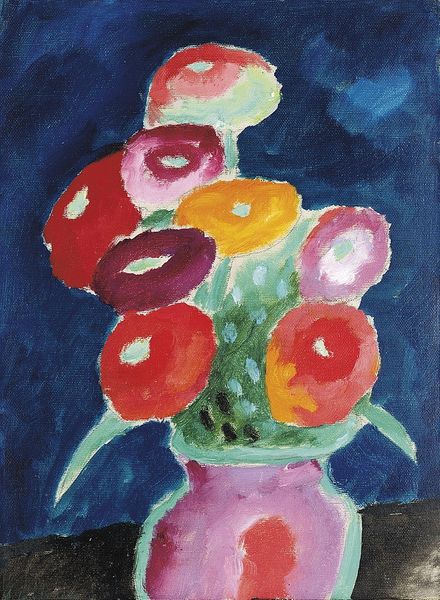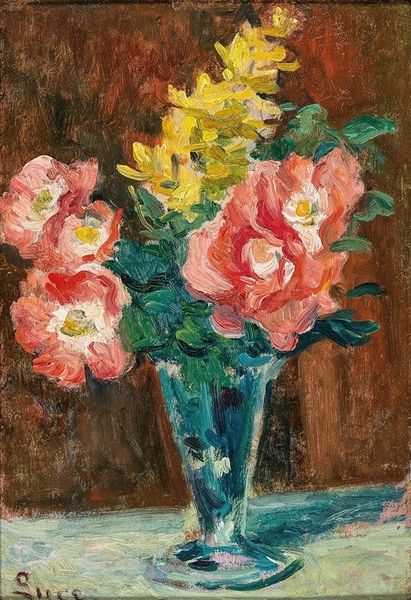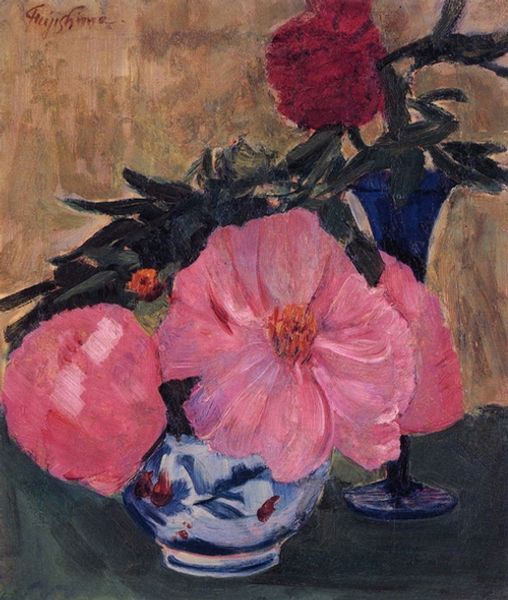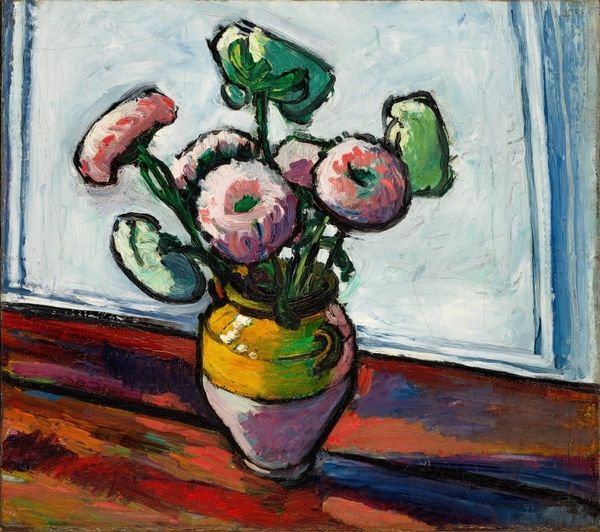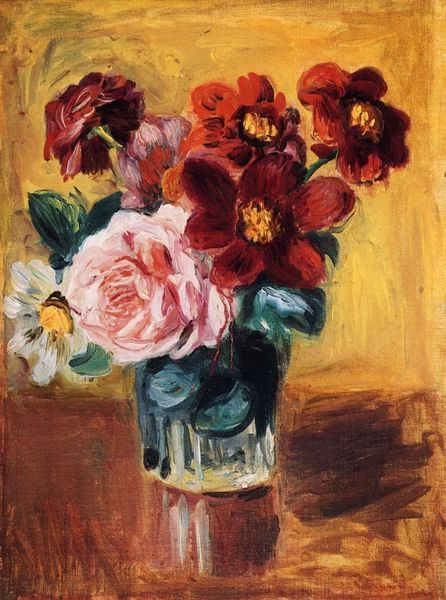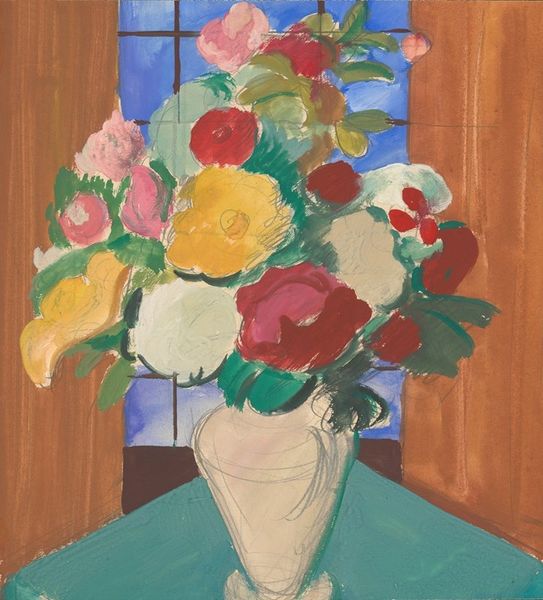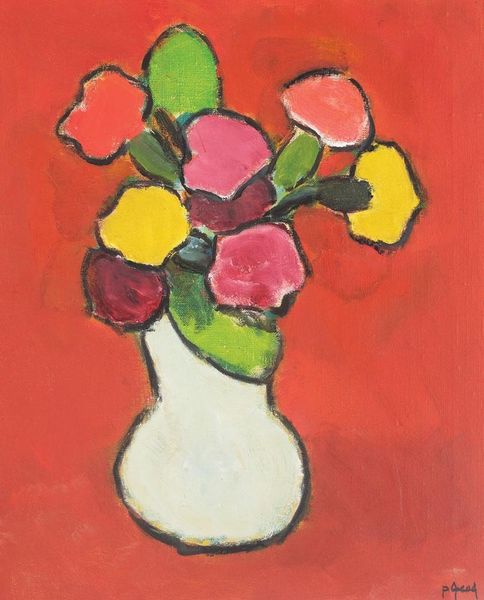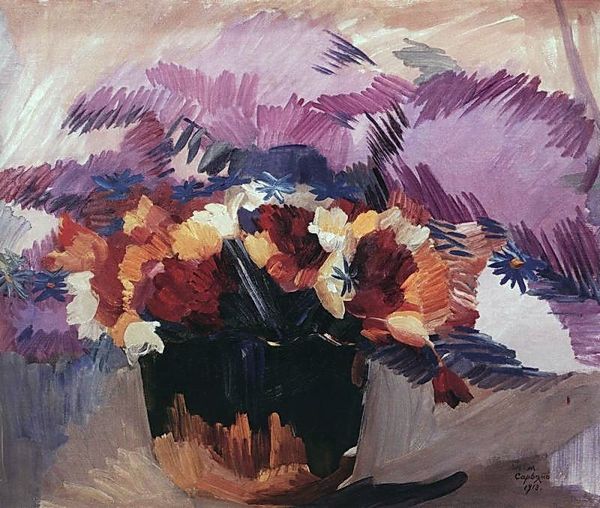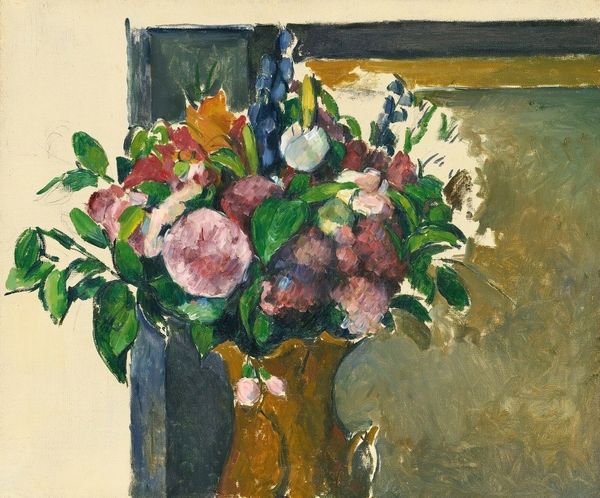
painting, oil-paint
#
abstract painting
#
painting
#
oil-paint
#
oil painting
#
expressionism
#
naive art
#
expressionist
Copyright: Public Domain: Artvee
Editor: So, here we have "Flowers in a Vase," an oil painting by Marsden Hartley. There's this tension between the vivid floral display and the somewhat subdued backdrop... it feels almost melancholic, don't you think? What do you see in this piece? Curator: Indeed. While vibrant at first glance, the flowers’ symbolism transcends mere beauty. Flowers often represent transient beauty and mortality, a vanitas theme deeply rooted in art history. What sort of cultural echoes do these particular flowers—irises, lilies, perhaps tulips—suggest to you? Are there visual connections you observe across the canvas, perhaps in repeated shapes or colour harmonies, that emphasize or challenge the symbols of nature? Editor: I'm noticing the pinks are repeated from the cloth on the table to several flower petals, almost like the background is encroaching on the foreground. I see your point about mortality now. But, like... naive art usually feels joyous, right? Curator: The "naive" aspect, which is often marked by simplified forms and an unpolished aesthetic, might offer a raw, unfiltered emotional expression, which I interpret as defiance. Consider the boldness of the colours and brushstrokes as assertions of vitality against that backdrop we initially observed. The Expressionist element introduces an urgency, a reaching out—how does that defiance sit with your initial sense of melancholic tension? Editor: It almost feels like he's wrestling with mortality, or some other intense emotion, through this still life. Thank you! Curator: Precisely. By recognizing visual languages we gain access to emotional and psychological textures, seeing echoes through art history that shift and redefine what we thought we already understood.
Comments
No comments
Be the first to comment and join the conversation on the ultimate creative platform.
